Informacje o artykule
DOI: https://www.doi.org/10.15219/em106.1673
W wersji drukowanej czasopisma artykuł znajduje się na s. 31-40.
 Pobierz artykuł w wersji PDF
Pobierz artykuł w wersji PDF
 Abstract in English
Abstract in English
Jak cytować
Ochnio, L., Hamulczuk, M., Koszela, G., Czech, K., Salim, E., Slavova, M., & Tucci. G. (2024). New tool supporting teachers in designing online interactive content - lessons learned from experiences in Poland, Italy, Bulgaria, Greece and Sweden. e-mentor, 4(106), 31-40. https://doi.org/10.15219/em106.1673
E-mentor nr 4 (106) / 2024
Spis treści artykułu
- Abstract
- Introduction
- Literature review
- The iSurvive project description and methodology
- The iSurvive project results - intellectual outputs presentation
- Discussion
- Conclusions and recommendations
- Acknowledgment
- References
Informacje o autorach
New tool supporting teachers in designing online interactive content - lessons learned from experiences in Poland, Italy, Bulgaria, Greece and Sweden
Luiza Ochnio, Mariusz Hamulczuk, Grzegorz Koszela, Katarzyna Czech, Esraa Salim, Milanka Slavova, Giorgia Tucci
Abstract
Restrictions related to the COVID-19 pandemic forced universities and teachers to switch from face-to-face to online teaching, which required adopting solutions for numerous organisational and technical challenges. In this context, the aim of this study is to highlight issues faced by teachers during the COVID-19 pandemic, show e-learning solutions developed as part of the iSurvive project, and assess their usefulness in online teaching. In the research conducted in 2021-2023, challenges with online teaching and learning were identified, a handbook with important advice for online teaching was prepared, an interactive & gamified online content search engine was created, and training for academics was prepared and conducted. Students, academic teachers and relevant experts in the field of e-learning from four European countries took part in the quantitative and qualitative research and training. A unique outcome of the project was the creation of e-learning applications, catalogues and content maps stored in one place, which proved their innovation and adoption to the needs of an unstable and unpredictable world, and received positive feedback.
Keywords: online tools, e-learning, open source, MOOC, EU project
Introduction
On 13 March 2020, a total of 61 countries worldwide announced the closure of schools and universities, following the official announcement of the start of the COVID-19 pandemic by the World Health Organisation on 11 March 2020 (Ciotti et al., 2020). Despite adopting preventive social distancing policies, the need to protect the youngest groups from the rapid contagion of the disease led to a total disruption in the delivery of school and university education, moving from 'traditional' face-to-face teaching to online learning (Jandrić et al., 2020; Mseleku, 2020).
The COVID-19 pandemic measures incentivised 'distance learning' in order to ensure the continuity of education, with school administrators and teachers consequently facing the task of changing traditional teaching paradigms for the duration of the suspension of teaching activities, during which they had to organise 'virtual classes', paying attention to the specific needs of students. The transition from face-to-face teaching to e-learning represented, on the one hand, a great opportunity to adopt a more flexible, widespread and interactive approach, while, on the other hand, it highlighted many disadvantages and challenges, such as the absence of face-to-face interactions and the lack of physical proximity to classmates. This sudden process also found both teachers and learners to be unprepared to deal with digital teaching, partly due to a lack of digital skills and partly due to objective challenges related to technological infrastructure (Hassan, 2021; Ochnio et al., 2022; Simamora et al., 2020).
To make up for the technological gaps, many institutions set up valuable resources for teachers and students, such as webinars, multimedia materials, tools for cooperation and the exchange of good practices, communities, etc. There was a significant increase with dynamic evolution in the supply of services and tools to support digital teaching, such as e-learning platforms for course delivery, digital reference for user assistance, web conferences for virtual meetings, web tools for creating digital lessons, live lectures and virtual classes, etc. (Alam, 2022). The process was two-pronged. On the one hand, institutions independently tried to solve these problems, while on the other, government and international institutions supported the creation of remote learning tools. One such institution supporting modern e-learning solutions was the Erasmus+ programme, as part of which a consortium of experts drew attention to the potential and issues with online teaching, providing a new tool to train and support teachers in designing effective interactive online content.
The study therefore aimed to present the issues with teaching during the COVID-19 pandemic, e-learning solutions developed as part of the iSurvive project, and their usefulness in online teaching. The main research questions were as follows: how can we accelerate the process of transferring traditional courses into online courses to help teachers during unstable times, such as the pandemic; how can we respond to the needs of academic teachers so that they can quickly learn the intricacies of e-learning?
Literature review
Education has always been greatly influenced by the rapid development of technology. E-learning is a synonym for online learning, and relates to delivering educational services using information and communication technologies. Initiated in the 60s, based on framework computers (Brika et al., 2022), some researchers also consider it a successor of mail correspondence courses that were the first form of distant learning. In the 90s learning management systems (LMS) became popular, with Moodle being a widely used example of an LMS (Kruse et al., 2023).
The first decade of the new century saw the birth of Massive Open Online Courses (MOOC). MOOCs were offered for the first time in 2012, when technological companies and leading universities, both in the US and Europe, created technology platforms that simultaneously allowed many courses to target very different audiences (McAuley et al., 2010; Weller, 2014). Few universities included MOOCs in their regular programmes, with the courses addressing access, affordability and efficiency in education (Slavova, 2017). While due to time and expense constraints the dissemination of MOOCs was not as successful as expected, the COVID-19 pandemic renewed the interest in them.
There are many terms used to describe the e-learning process or some of its aspects. According to Kumar Basak et al. (2018), D-learning is the most general term that signifies the usage of technologies for learning, while e-learning is the educational process supported by using electronic tools and media mainly via the internet. Another aspect is synchronous learning as simultaneous interaction between educators and those educated and the asynchronous learning process - learners study the teaching materials by themselves (Moore, 2012).
There are various reasons for e-learning development. Some universities use it to reach students in remote areas or attract international students. Today e-learning is an integral part of the educational process developed in different constructs, using various interactive multimedia resources and improving the learning experience. One of the most common open-source learning and management platforms used all around the world for e-learning is Moodle (Alkhateeb et al., 2010, Alonso de Castro & García-Penalvo, 2021, Meriem & Youssef, 2020, Ntshwarang, 2021, Qazi et al., 2021, Țurcanu et al., 2020). The need for innovative e-learning tools, training and new technologies gains significance especially during the unstable conditions of constant shocks (pandemics, conflicts, political instability, etc.). Teaching and learning through innovative teaching tools instead of traditional education remains challenging. Hence, tutorials and motivation programmes for ICT-based learning can remove ICT-based learning deficiencies and improve the outcome quality and success rate (Qazi et al., 2021). The evolution of web and computer-assisted learning and the current directions in e-learning applications are hybridisation, modularity, standardisation and integration (Rogerson-Revell, 2007).
The COVID-19 pandemic restrictions had an immense impact on the development of e-learning and contributed to its enhancement (Mahmud et al., 2022). The lack of training, working conditions, technological background, skills, copyright protection and professional development are important factors in implementing e-learning in public universities (Maatuk et al., 2022). Turnbull (2021) identifies five challenges to transitioning to online education experienced by higher education institutions: synchronous/asynchronous learning tool integration, access to technology, faculty and student online competence, academic dishonesty, and privacy and confidentiality.
During the COVID-19 pandemic, the vast majority of universities faced the same challenges. They had various technical problems, including low-quality Internet services in that country, with many students facing challenges in adopting to technology (Al-Balas et al., 2020). In some universities, despite students' positive attitudes towards the e-learning approach, the university's management did not encourage teachers to implement ICT in teaching due to concerns about limited resources and lack of competencies (Asad, 2021), with some students expressing discomfort in using the newly introduced e-learning platforms (Kaushik & Agrawal, 2021). Marunevich et al. (2021) stress that despite the adoption of various e-learning and m-learning interactions, such as social networks and video conferencing, both students and teachers lacked familiarity with these platforms due to inadequate training and the unexpected shift to online learning during the COVID-19 pandemic. Ongoing investments in faculty training to use online platforms could help maintain high-quality university programmes, especially during unstable times such as pandemics, crises, conflicts and natural disasters.
The COVID-19 pandemic exposed the different readiness levels of universities and lecturers to adopting e-learning approaches and tools. It turned out to be a greatly challenging to take advantage of the variety of teaching approaches that already existed or started to diversify very quickly, with academics needing guidance in the adoption of suitable tools congruent with their course objectives. This process often entailed trial and error, notwithstanding the substantial efforts by university administrations to assist them in accessing diverse platforms. The amount and variety of e-learning tools made it challenging for the instructors to choose appropriate ones tailored to their courses' needs. Teachers required catalogues, content maps and guides that conveniently showed each tool's advantages and limitations. The iSurvive project constitutes a response to the problems that emerged during the COVID-19 pandemic, and the creation of such catalogues and content maps serves the novelty of the project and proves its innovation and adoption to the needs of an unstable and unpredictable world.
The iSurvive project description and methodology
In the aftermath of the COVID-19 pandemic, many academics and teachers had to switch from face-to-face to online courses and classes. Many teachers were already aware of the e-learning concept and its tools, but due to the COVID-19 pandemic appearing so unexpectedly, neither teachers nor students were prepared for such a sudden change. For many academics and teachers, their initial response to this change was just to create a virtual meeting room for students by just sharing PowerPoint presentations. The iSurvive project came as a response to this pandemic crisis, and was developed to provide academics and teachers with all the necessary knowledge and tools to prepare them to provide their students with a full and comprehensive pedagogical experience. The project was designed to enhance the teachers' knowledge about the online teaching concept and also provide them with the necessary tools enabling them to deliver their classes more efficiently and deliver first aid in the quick transfer of classes.
The project, which started in June 2021 and ended in May 2023, gathered 7 partners from Europe, represented by the following organisations: SGGW (Poland), UNWE (Bulgaria), CRES (Italy), UNINETTUNO (Italy), FU (Sweden), ITPIO (Bulgaria). The following tasks can be distinguished in the project lifecycle:
- Comparative study - identifying the challenges in online teaching and learning,
- A guide of key pedagogical principles for effective online teaching and learning creation,
- The iSurvive compass for interactive & gamified online content creation,
- MOOC training - a library with 40 tools collected, described and catalogued.
The goal of the first task was to diagnose the challenges teachers faced when they quickly and suddenly transferred to online classes. The diagnosis was performed from the perspective of the student (questionnaires) and the teacher (questionnaires and focus groups), with some 809 students and nearly 50 teachers participating in this stage (Table 1). The research was carried out from September to December 2021, with qualitative and quantitative analysis conducted to study the previously mentioned gap based on the responses of the direct target groups (academics and teachers) and the indirect target group (students). This analysis illustrated a set of challenges faced in the online teaching process (Ochnio et al., 2022), with the results of this task taken into consideration in the future steps, and the remaining project's outcomes built based on the conclusions of this task.
Table 1
Sample sizes in each step of the project
| Stage of the project | Type of activity | Number of participants |
| Comparative study | Student questionnaire | 809 |
| Teacher questionnaire | 48 | |
| Focus groups | 22 | |
| The guide | Focus groups | 17 |
| External reviewer opinions | 10 | |
| iSurvive compass | Teacher/lecturer pilot training (questionnaires) | 75-100 |
| External expert opinions | 10 | |
| MOOC | Teacher/lecturer pilot training (questionnaires) | 75-100 |
| Teachers' opinions after use for own classes preparation | 35 | |
| External expert opinions | 10 | |
| External reviewer opinions | 10 |
Source: authors' own work.
In the second task, a 120-page handbook including the most important tips for online teaching was written. A search engine, called the iSurvive compass, was designed in the third step. Within the last task, MOOC training was performed, providing the teachers and academics the information needed to use the available online teaching tools, and a quantitative analysis of trained participants' satisfaction was conducted. The surveys aimed to assess the usability of the developed iSurvive compass and determine whether the knowledge and awareness of e-learning tools among the trained-academic teachers had increased. The usability of the provided tools was also assessed by external reviewers (experts in e-learning). The MOOC is designed on the Moodle platform, with numerous users already registered to the courses (over 350).
The iSurvive project results - intellectual outputs presentation
A guide of key pedagogical principles for effective online teaching and learning
As part of the project's output, a guide was prepared for academic teachers who wish to transform their face-to-face courses into online courses or enhance their classes by incorporating attractive technological solutions. The guide aimed to equip academic teachers with specialised pedagogical knowledge, useful tips, and practical know-how necessary for creating effective online classes and considering the diverse learning outcomes, outlining the fundamental steps required to create an online course. The online book describes various types of technology for conducting online classes, such as interactive tools like applications, engaging presentation software, educational games, etc, outlining the fundamental steps required to create an online course, develop a subject syllabus, build interactive modules, and present effective utilisation of tools for preparing online classes and designing MOOC courses. The guide also addresses issues related to student motivation, classroom management strategies, working in an intercultural environment, and provides insights into student assessments and online course evaluation (https://www.isurviveproject.eu/).
iSurvive compass - the tool
The iSurvive compass for interactive & gamified online content creation constitutes the "hand on" tools needed to create interactive and gamified content. Most of the academics do either not have enough time to search, choose and learn all of the tools to make their content interactive and motivating, or they find some tools that seem useful and use them regardless of whether they are the correct ones for their target group, disciplines, class duration etc. This task aimed to create an inventory with appropriate technology tools for interactive content Creation and SCORM (Sharable Content Object Reference Model) by using open online resources. For teachers and academics to obtain easier access to various tools, an algorithm was prepared to provide the teachers with an orientation tool. The compass is available in numerous languages (a fragment of the site is presented in the Figure 1a). An interactive survey that answers simple questions about the lectures or the institution is used for accessing a specific subgroup of the resources collected (Figure 1b).
Figure 1
iSurvive compass (a) with an interactive survey (b)
Note. The picture shown on the Figure 1 is available after enrolment to the course.
Source: iSurvive (https://isurvive.projectlibrary.eu/).
The full list of questions in the survey is as follows: videos, presentations, recorded/live meetings, quizzes, interactive tasks (tests, case studies), gamifications, didactic games, competitions or contests (rivalry), interactive elements (e.g. animations).
For each criterion teachers determine the relevance of the tool they are searching for on a scale from 0 (not at all relevant) to 5 (highly relevant). The compass displays a list of dedicated tools selected for specific needs according to the relevance indicated in the survey. Figure 2 presents the answers for a chosen questionnaire. The list of the chosen applications generated by the compass calculated the best fitted tools for the user's needs.
Figure 2
The interface of the questionnaire results of the iSurvive compass
Note. The picture shown on the Figure 2 is available after enrolment to the course.
Source: iSurvive (https://isurvive.projectlibrary.eu/).
The project also foresaw a piloting phase of results tested and evaluated by the project partners in their countries to assess the suitability, reliability and quality of the tools developed within the project, as well as to provide recommendations for further improvements. The piloting aimed to assess the feasibility and impact of the educational technology tool in a real classroom context, and to gather feedback from participants to identify areas for improvement and potential modifications to the outputs produced. Indicatively, the iSurvive compass, the guide and the library were tested by a total of 100 school teachers and university lecturers.
Feedback from the trainees was collected during and after the piloting stage. Two external reviewers per country, specialised in e-learning, were asked to share their opinion about all the project outputs, which are the guide, iSurvive compass and MOOC. The reviewers graded chosen criteria from 1 to 4, where 1 was insufficient and 4 was excellent, assessing areas such as the usability and flexibility of the tools (intuitiveness, graphical layout - i.e. visually appealing, attractive, eye-catching), technical quality of the tools, comprehension of languages and texts (the language of the tools, the accuracy of descriptions), and overall satisfaction, and could freely add other suggestions.
Evaluators primarily assessed all the areas in grade 4, with occasional evaluations in grade 3, along with providing additional comments. Overall, the opinions received were very positive, and satisfaction with the project was rated as excellent. The novelty of the proposed solution is much appreciated in a rapid changing environment, where academic teachers have no time to transfer their classes from traditional to online versions. Regarding the iSurvive compass recommendations, they exceeded the project scope but are considered crucial for future development. Teachers and academics highlighted the potential of the iSurvive compass and MOOC in enhancing student engagement, resilience and learning outcomes, and strongly recommended continuing the development and iteration of the iSurvive compass and MOOC.
According to experts, further refinements should be made in the iSurvive compass to include customisation options, such as users should having the ability to apply filters to select specific criteria, such as tools with free access. The roadmap in the iSurvive compass algorithm should print the tools that cater to teachers' needs, and it could be beneficial to rank the suggested tools indicating the three most essential tools as the primary options, with the rest as recommended as secondary choices.
MOOC training
As a result, the outcome of the last project was a MOOC training designed to equip teachers and academics with the necessary knowledge to effectively utilise the available online teaching tools. Within this MOOC, the tools are categorised based on learning methods, with each method concisely explained, and a curated set of online tools corresponding to each method presented. Each tool is comprehensively described, ensuring that teachers and academics can easily access all the information and links required to initiate the use of the tool.
In order for the university lecturers and academics to successfully use the tools for interactive and gamified content creation developed as part of the roadmap for their courses, they needed to receive training, which was provided as an online course in the form of a MOOC. The MOOC course created within the project constitutes interesting and interactive tutorials for all the tools included in the created databank. The course is accessible on the Moodle platform after registration.
Each trainee/project beneficiary can explore all the tools or select those relevant to their specific needs as indicated in their individualised roadmap provided by the iSurvive compass application integrated into the Moodle platform. The tools are all presented as separate modules (Figure 3) that can be separately trained.
Figure 3
MOOC course with type of classes modules
Note. The picture shown on the Figure 3 is available after enrolment to the course.
Source: iSurvive (https://isurvive.projectlibrary.eu/).
The MOOC describes a total of 40 tools, categorised into seven groups, with each dedicated to specific tasks such as lectures, laboratories, tests, competitions, teamwork, didactic games, etc. The course offers insights into the tools, tutorial links, available languages, pricing plans, and registration procedures (see Figure 4), which is very helpful for the teachers when the compass show them a first list, in order to quickly obtain access to the online tools and learn more about them, e.g. whether there are translated versions or where video instructions are available etc.
Figure 4
Exemplary content of the MOOC course
Note: The picture shown on the Figure 4 is available after enrolment to the course.
Source: iSurvive (https://isurvive.projectlibrary.eu/).
Additionally, as part of the project outcomes, the conducted training sessions were evaluated, with 100 teachers trained and 71 responses received from the questionnaire. All participants expressed that the training was either useful or very useful, with the information provided seen as relevant to online learning. Before the training, only 43.7% of participants reported having access to e-learning tools, while following the training all participants indicated a lack of issues with accessing such tools. Furthermore, familiarity with e-learning tools demonstrated a significant increase (Figure 4, left diagram). Before the training, 53% of participants stated that they were familiar with only three or fewer tools, while following the training only 10% of teachers fell into this category, with the majority (68%) declaring that they were acquainted with at least seven e-learning tools. Moreover, knowledge about specific tools dedicated to preparing lectures, tests, group classes, or classes with gamification elements also saw a notable improvement. As a result, the comfort level of teachers conducting online classes significantly improved (Figure 5, right diagram).
Figure 5
Selected results of surveys conducted before and after the training
Source: authors' own work based on iSurvive research.
We applied the two-sample t-test to check whether the iSurvive projects results led to significant enhancement of lectures' knowledge and comfortability with using online teaching tools, and verified the null hypothesis that the project results do not have any impact on lectures' comfortability with using online teaching tools and the number of tools they know. The results of the one-sided t-test indicated that, at the significance level of α = 0.10, the average number of people who answered that they did not feel comfortable with online teaching was statistically significantly greater before the implementation of iSurvive courses than after them (t = 2.01, p-value = 0.057; H1: μBEFORE > μAFTER). Moreover, the test results revealed that the the average number of people who answered that they felt comfortable with online teaching was statistically significantly greater after the implementation of iSurvive courses than before them (t = 1.55, p-value = 0.097; H1: μAFTER > μBEFORE). Additionally, the results of one-sided t-test showed that the average number of online tools that the survey participants' knew was significantly greater after the iSurvive course) (t = 2.116, p-value = 0.062; H1: μAFTER > μBEFORE).
The piloting results were highly significant for obtaining a comprehensive overview of the current state of digital competencies within the educational community, and for refining and expanding the project's covered tools. According to the survey questions, prior to the piloting many online learning tools were unfamiliar to the participants, who were uncertain about which tools to use for preparing online tests and exams. All participating organisations also prepared a report from the training, where they stated that all trainees acknowledged that independently discovering, testing and learning how to use tools was time-consuming, while nearly half of them were not acquainted with tools supporting the preparation of online lessons with educational game elements before the piloting. According to the participants' comments during the training, they particularly appreciated the interactive nature of the online tools, although some found it restrictive that certain tools were fee-based or required user registration.
Following the piloting, the survey and comments indicated that the majority of participants were satisfied with the event, found it extremely useful, and deemed the received information as relevant to their work, additionally expressing their intention to incorporate the acquired e-learning knowledge and tools into their online classes. All the participants increased their familiarity with a greater number of tools, and improved their awareness and ability to select the most suitable tools for their classes, which they pointed to in the survey.
Five teachers from each country, with the exception of Greece, where there were 15, actively utilised the developed tools in practice (35 teachers in total), and were subsequently requested to provide their feedback on the experience. Nearly two-thirds of the respondents reported that the e-learning tools from our project significantly assisted them in preparing online class content, with especially the iSurvive compass proving to be highly beneficial in aiding teachers during the preparation process for online classes (refer to the responses shown in Figure 6).
Figure 6
Evaluation of the iSurvive compass by teachers
Source: authors' own work based on iSurvive research.
Furthermore, the evaluation results indicate the necessity to ensure easy access for teachers to the MOOC link. To achieve this, we should aim to minimise the number of clicks required for accessing the MOOC, for instance by presenting the list of recommended tools generated by the iSurvive compass as hyperlinks, redirecting teachers to the specific tool presentations on the MOOC's page. Additionally, the MOOC should be regularly updated to incorporate new solutions, prices and possibilities, and the database in general should be gradually expanded to encompass the full spectrum of available tools.
Discussion
There is a great need for innovative e-learning tools, training and new technology especially during the unstable conditions of constant shocks (pandemics, conflicts, political instability, etc.), and teaching and learning through innovative teaching tools instead of traditional education styles remains a challenge. The COVID-19 pandemic exposed the difference in readiness levels of universities and lecturers to adopt e-learning approaches and tools (Al-Balas et al., 2020; Asad, 2021; Marunevich et al., 2021), with academics needing guidance to adopt appropriate tools corresponding to the course goals. The extensive choice of e-learning tools created problems for the instructors to choose appropriate ones tailored to their courses' needs, with teachers requiring catalogues, content maps and guides conveniently showing the advantages and limitations of each tool. The iSurvive project constituted a response to the challenges present at that time, as there had previously been no such tool. Its creation therefore proved to be a novelty in the project results.
Nwagwu (2020) and Țurcanu et al. (2020) highlight the necessity for additional investments in e-learning. Alqahtani and Rajkhan (2020) and Hartshorn and McMurry (2020) emphasise the importance of adequately preparing teachers and students for the online teaching process, underscoring the necessity of creating suitable training materials in this regard, and numerous textbooks and manuals have been developed, detailing specific e-learning tools utilised in education. However, what sets the iSurvive project apart is its facilitation of the creation of a compass/map, enabling lecturers to select various e-learning tools tailored to their educational needs, assessment format and course content. In the future, such a tool could be further refined with proper implementation of artificial intelligence, as it appears that the advancement of artificial intelligence will be immensely beneficial in the innovative and efficient development of online teaching tools (Arun Kumar et al., 2022).
Conclusions and recommendations
The aim of the study was to present teaching challenges during the COVID-19 pandemic, e-learning solutions developed as part of the iSurvive project, and their usefulness in online teaching management. The surveys and in-depth focus studies confirmed numerous issues related to transitioning from traditional teaching to distance learning, with students' satisfaction with online classes and their attractiveness significantly depending on the field of study, potentially indicating the need to differentiate the tools applied. Interactive content and interesting design of the courses and quizzes were listed among the most motivating techniques in online learning. Teachers also confirmed that passive online education should be avoided, to be replaced by interactive solutions. Research indicates that the preferred future learning model is based on blended classes with around a 50% share of traditional and online courses. For successful e-learning, it is crucial to understand the technical, psychological and social aspects of distance learning. As part of this project, we prepared a guide covering the key pedagogical principles for effective online teaching and learning, equipping academics and teachers with the necessary information and knowledge for creating effective online classes. Its content, which covered the fundamental steps required to create online courses and knowledge about pedagogical competencies, was positively received by teachers and experts.
Academic teachers expressed that they often faced challenges in finding enough time to search, select and learn various tools to make their content interactive and engaging. The iSurvive compass tool was developed to address this need, facilitating the selection of the most appropriate e-learning tools for diverse classes and teaching activities. To effectively implement the iSurvive compass tool, 40 e-learning tools were organised into specific groups, with interactive tutorials created for each category. The resulting MOOCs, available on the Moodle platform, were utilised in piloting and training activities. Following the training sessions, all participants reported having found the training to be either useful or very useful, with the information provided being highly relevant to online learning. As a result of the training, the participants significantly increased their familiarity with e-learning tools. Their knowledge of specific tools dedicated to preparing lectures, tests, group classes, or incorporating gamification elements also notably improved, with nearly two-thirds of the teachers who experienced the digital roadmap and the MOOC indicating that the e-learning tools from the project had greatly assisted them in preparing online class content. Furthermore, all participants demonstrated increased proficiency in knowledge of the tools, encompassing the number of tools they were aware of and their ability to select the most suitable ones for their respective classes.
Based on the project results, several recommendations can be put forth. Firstly, in order to practically utilise the tool developed within the project, there is a need for extensive dissemination and promotion of the platform to ensure accessibility to the target group. Additionally, constant updating and incorporation of feedback from users and experts is essential to enhance its effectiveness. Furthermore, the COVID-19 pandemic underscored the importance of active efforts by governments and international institutions to address the adverse impacts of global shocks. Consequently, closer cooperation between educational institutions, fostering economies of scale, is also highly recommended.
Acknowledgment
This work was supported by the Erasmus+ Programme of the European Union, project nr 2020-1-PL01-KA226-HE-095331: Digital Roadmap for designing online interactive content.
References
- Alam, A. (2022). A digital game based learning approach for effective curriculum transaction for teaching-learning of artificial intelligence and machine learning. 2022 International Conference on Sustainable Computing and Data Communication Systems (ICSCDS) (pp. 69-74). IEEE. https://doi.org/10.1109/ICSCDS53736.2022.9760932
- Alkhateeb, F., AlMaghayreh, E., Aljawarneh, S., Muhsin, Z., & Nsour, A. (2010). E-learning tools and technologies in education: A perspective. E-learning. https://doi.org/10.13140/2.1.1017.9847
- Alonso de Castro, M. G., & García Penalvo, F. J. (2021). ICT tools highlighted and their usefulness during the pandemic: Erasmus+ projects related to eLearning. In Ninth International Conference on Technological Ecosystems for Enhancing Multiculturality (TEEM'21) (pp. 219-224). https://doi.org/10.1145/3486011.3486450
- Alqahtani, A. Y., & Rajkhan, A. A. (2020). E-learning critical success factors during the covid-19 pandemic: A comprehensive analysis of e-learning managerial perspectives. Education Sciences, 10(9), 216. https://doi.org/10.3390/educsci10090216
- Arun Kumar, U., Mahendran, G., & Gobhinath, S. (2022). A review on artificial intelligence based E-learning system. In G. Ranganathan, R. Bestak, & X. Fernando (Eds.), Pervasive computing and social networking (pp. 659-671). Lecture Notes in Networks and Systems, 475. Springer. https://doi.org/10.1007/978-981-19-2840-6_50
- Asad, M. M., Hussain, N., Wadho, M., Khand, Z. H., & Churi, P. P. (2021). Integration of e-learning technologies for interactive teaching and learning process: an empirical study on higher education institutes of Pakistan. Journal of Applied Research in Higher Education, 13(3), 649-663. https://doi.org/10.1108/JARHE-04-2020-0103
- Al-Balas, M., Al-Balas, H. I., Jaber, H. M., Obeidat, K., Al-Balas, H., Aborajooh, E. A., Al-Taher, R., & Al-Balas, B. (2020). Distance learning in clinical medical education amid COVID-19 pandemic in Jordan: current situation, challenges, and perspectives. BMC Medical Education, 20(1), 513. https://doi.org/10.1186/s12909-020-02257-4
- Brika, S. K. M., Chergui, K., Algamdi. A., Musa, A. A., & Zouaghi, R. (2022). E-Learning research trends in higher education in light of COVID-19: A bibliometric analysis. Frontiers in Psychology, 12, 762819. https://doi.org/10.3389/fpsyg.2021.762819
- Ciotti, M., Ciccozzi, M., Terrinoni, A., Jiang, W. C., Wang, C. B., & Bernardini, S. (2020). The COVID-19 pandemic. Critical Reviews in Clinical Laboratory Sciences, 57(6), 365-388. https://doi.org/10.1080/10408363.2020.1783198
- Hartshorn, K. J., & McMurry, B. L. (2020). The effects of the COVID-19 pandemic on ESL learners and TESOL practitioners in the United States. International Journal of TESOL Studies, 2(2), 140-156. https://doi.org/10.46451/ijts.2020.09.11
- Hassan, M. (2021). Online teaching challenges during COVID-19 pandemic. International Journal of Information and Education Technology, 11(1), 41-46. https://doi.org/10.18178/ijiet.2021.11.1.1487
- Jandrić, P., Hayes, D., Truelove, I., Levinson, P., Mayo, P., Ryberg, T., Monzó, L. D., Allen, Q., Stewart, P. A., Carr, P. R., Jackson, L., Bridges, S., Escano, C., Grauslund, D., Manero, J., Lukoko, H. O., Bryant, P., Fuentes-Martinez, A., Gibbons, A., ... Hayes, S. (2020). Teaching in the age of Covid-19. Postdigital Science and Education, 2(3), 1069-1230. https://doi.org/10.1007/s42438-020-00169-6
- Kaushik, M. K., & Agrawal, D. (2021). Influence of technology readiness in adoption of e-learning. International Journal of Educational Management, 35(2), 483-495. https://doi.org/10.1108/IJEM-04-2020-0216
- Kruse, O., Rapp, C., Anson, C. M., Benetos, K., Cotos, E., Devitt, A., & Shibani, A. (Eds.). (2023). Digital writing technologies in higher education. Springer. https://doi.org/10.1007/978-3-031-36033-6
- Kumar Basak, S., Wotto, M., & Bélanger, P. (2018). E-learning, M-learning and D-learning: Conceptual definition and comparative analysis. E-Learning and Digital Media, 15(4), 191-216. https://doi.org/10.1177/2042753018785180
- Maatuk, A. M., Elberkawi, E. K., Aljawarneh, S., Rashaideh, H., & Alharbi, H. (2022). The COVID-19 pandemic and E-learning: challenges and opportunities from the perspective of students and instructors. Journal of Computing in Higher Education, 34(1), 21-38. https://doi.org/10.1007/s12528-021-09274-2
- Mahmud, M. M., Wong, S. F., & Ismail, O. (2022). Emerging learning environments and technologies post COVID-19 pandemic: What's next? In Y. Maleh, M. Alazab, N. Gherabi, L. Tawalbeh, & A. A. Abd El-Latif (Eds.), Advances in Information, Communication and Cybersecurity. ICI2C 2021. Lecture Notes in Networks and Systems, 357 (pp. 308-319). Springer. https://doi.org/10.1007/978-3-030-91738-8_29
- Marunevich, O., Kolmakova, V., Odaruyk, I., & Shalkov, D. (2021). E-learning and m-learning as tools for enhancing teaching and learning in higher education: a case study of Russia. In SHS Web of Conferences, 110, 03007. EDP Sciences. https://doi.org/10.1051/shsconf/202111003007
- McAuley, A., Stewart, B., Siemens, G., & Cormier, D. (2010). The MOOC Model for Digital Practice. https://www.oerknowledgecloud.org/archive/MOOC_Final.pdf
- Meriem, B., & Youssef, A. M. (2020). Exploratory analysis of factors influencing e-learning adoption by higher education teachers. Education and Information Technologies, 25, 2297-2319. https://doi.org/10.1007/s10639-019-10075-5
- Moore, M. G. (Ed.). (2012). The handbook of distance education (3th ed.). Routledge. https://doi.org/10.4324/9780203803738
- Mseleku, Z. (2020). A literature review of E-learning and E-teaching in the era of Covid-19 pandemic. International Journal of Innovative Science and Research Technology, 5(10), 588-597. https://ijisrt.com/assets/upload/files/IJISRT20OCT430.pdf30.pdf
- Nwagwu, W. E. (2020). E-learning readiness of universities in Nigeria-what are the opinions of the academic staff of Nigeria's premier university? Education and Information Technologies, 25(2), 1343-1370. https://doi.org/10.1007/s10639-019-10026-0
- Ntshwarang, P. N., Malinga, T., & Losike-Sedimo, N. (2021). eLearning tools at the University of Botswana: Relevance and use under COVID-19 crisis. Higher Education for the Future, 8(1), 142-154. https://doi.org/10.1177/2347631120986281
- Ochnio, L., Rokicki, T., Czech, K., Koszela, G., Hamulczuk, M., & Perkowska, A. (2022). Were the higher education institutions prepared for the challenge of online learning? Students' satisfaction survey in the aftermath of the COVID-19 pandemic outbreak. Sustainability, 14(19), 11813. https://doi.org/10.3390/su141911813
- Qazi, A., Hardaker, G., Ahmad, I. S., Darwich, M., Maitama, J. Z., & Dayani, A. (2021). The role of information & communication technology in elearning environments: a systematic review. IEEE Access, 9, 45539-45551. https://doi.org/10.1109/ACCESS.2021.3067042
- Rogerson-Revell, P. (2007). Directions in e-learning tools and technologies and their relevance to online distance language education. Open Learning: The Journal of Open, Distance and e-Learning, 22(1), 57-74. https://doi.org/10.1080/02680510601100168
- Simamora, R. M., De Fretes, D., Purba, E. D., & Pasaribu, D. (2020). Practices, challenges, and prospects of online learning during Covid-19 pandemic in higher education: Lecturer perspectives. Studies in Learning and Teaching, 1(3), 185-208. https://doi.org/10.46627/silet.v1i3.45
- Slavova, M. (2017). Lessons learned from the development and the implementation of MOOC in digital and social media marketing. Bulgarian Journal of Business Research, 22(02 EN), 56-63.
- Țurcanu, D., Siminiuc, R., & Bostan, V. (2020). The impact of the COVID-19 pandemic on the use of digital technologies in ensuring the efficient e-learning process at the Technical University of Moldova. Creative Education, 11(10), 2116-2132. https://doi.org/10.4236/ce.2020.1110154
- Turnbull, D., Chugh, R., & Luck, J. (2021). Transitioning to E-Learning during the COVID-19 pandemic: How have Higher Education Institutions responded to the challenge? Education and Information Technologies, 26(5), 6401-6419. https://doi.org/10.1007/s10639-021-10633-w
- Weller, M. (2014). Battle for open: How openness won and why it doesn't feel like victory. Ubiquity Press.

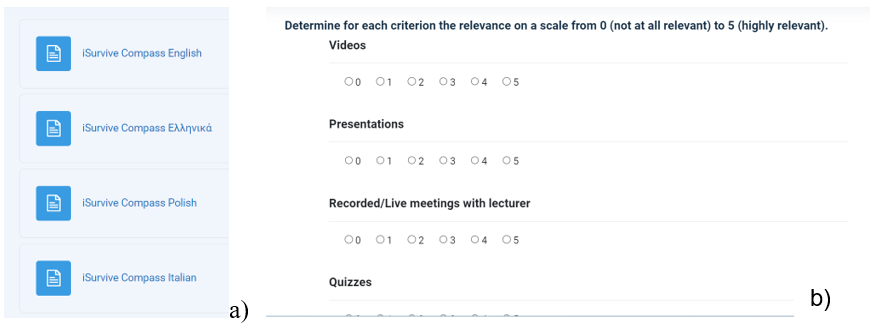

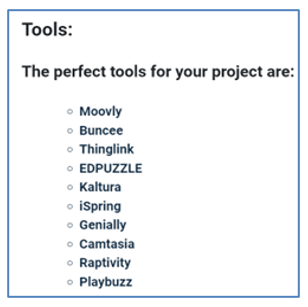

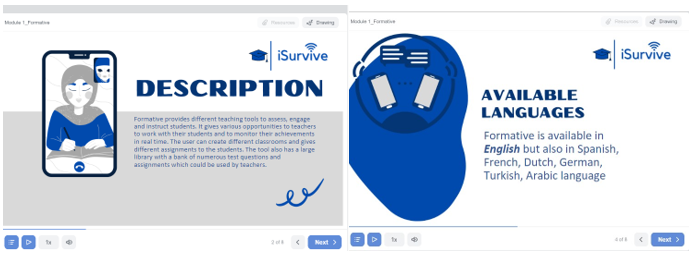
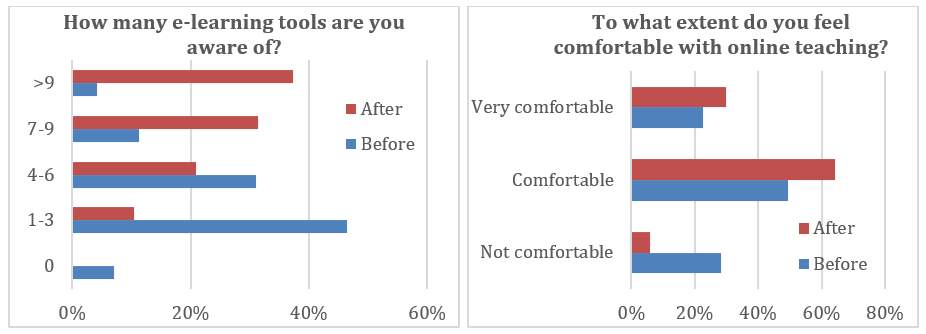
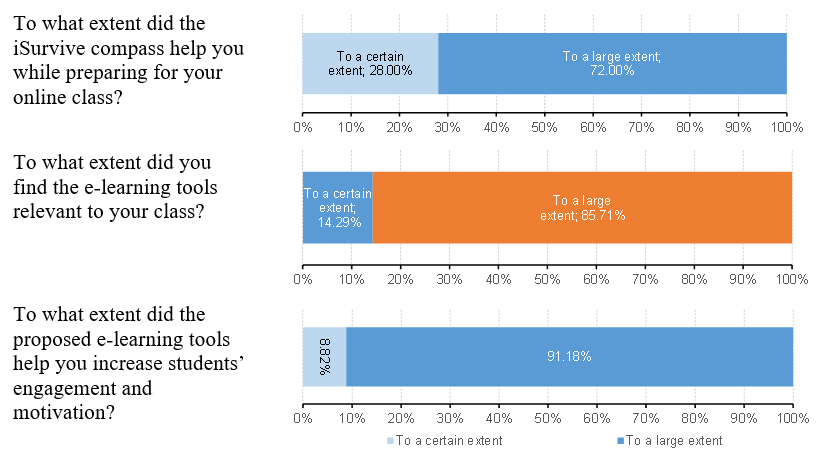

 https://orcid.org/0000-0001-8875-7945
https://orcid.org/0000-0001-8875-7945




